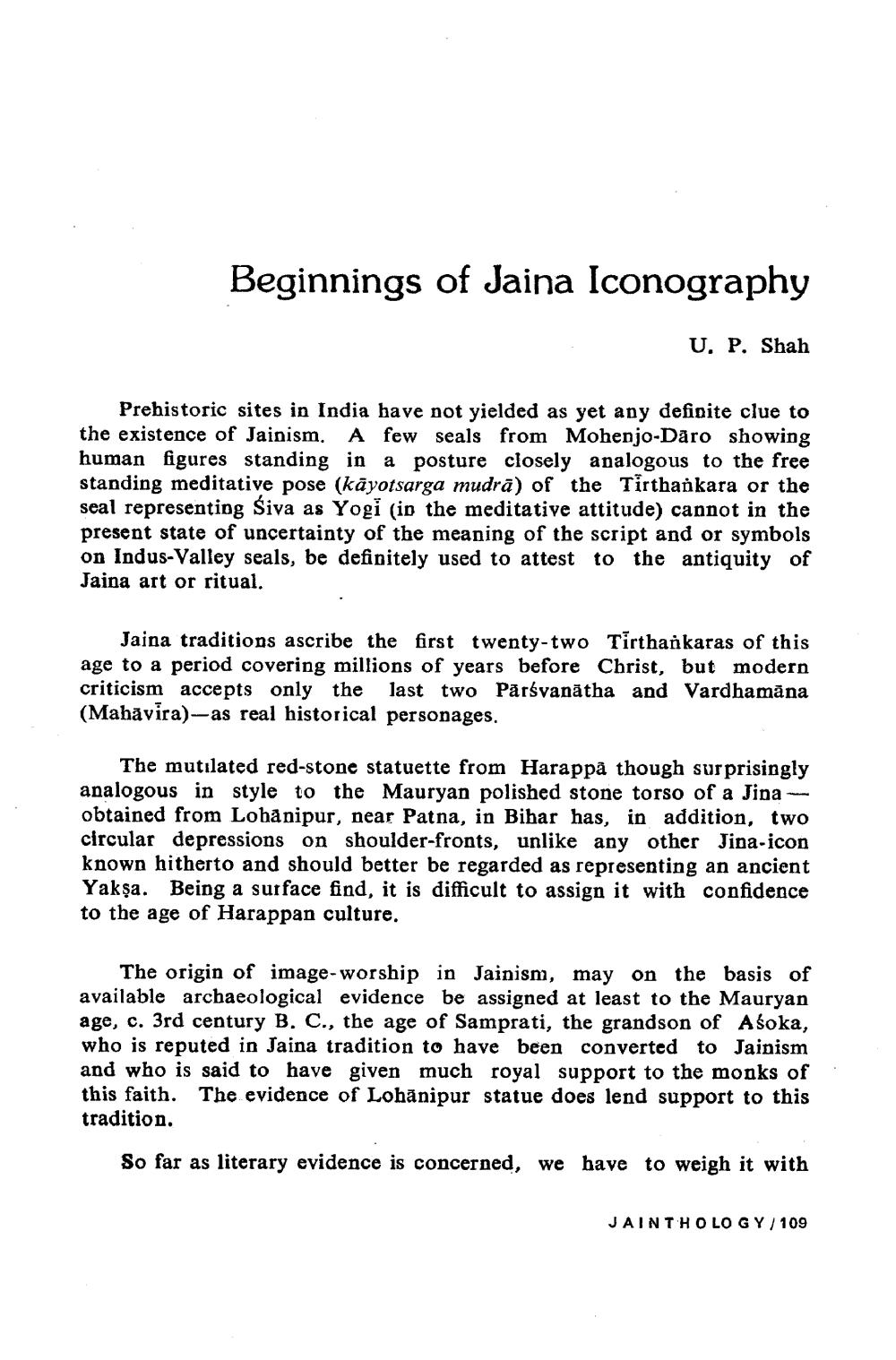________________
Beginnings of Jaina Iconography
U. P. Shah
Prehistoric sites in India have not yielded as yet any definite clue to the existence of Jainism. A few seals from Mohenjo-Daro showing human figures standing in a posture closely analogous to the free standing meditative pose (kāyotsarga mudrā) of the Tirthankara or the seal representing Śiva as Yogi (in the meditative attitude) cannot in the present state of uncertainty of the meaning of the script and or symbols on Indus-Valley seals, be definitely used to attest to the antiquity of Jaina art or ritual.
Jaina traditions ascribe the first twenty-two Tirthankaras of this age to a period covering millions of years before Christ, but modern criticism accepts only the last two Pārsvanatha and Vardhamāna (Mahavira)-as real historical personages.
The mutilated red-stone statuette from Harappa though surprisingly analogous in style to the Mauryan polished stone torso of a Jinaobtained from Lohanipur, near Patna, in Bihar has, in addition, two circular depressions on shoulder-fronts, unlike any other Jina-icon known hitherto and should better be regarded as representing an ancient Yakşa. Being a surface find, it is difficult to assign it with confidence to the age of Harappan culture.
The origin of image-worship in Jainism, may on the basis of available archaeological evidence be assigned at least to the Mauryan age, c. 3rd century B. C., the age of Samprati, the grandson of Asoka, who is reputed in Jaina tradition to have been converted to Jainism and who is said to have given much royal support to the monks of this faith. The evidence of Lohanipur statue does lend support to this tradition.
So far as literary evidence is concerned, we have to weigh it with
JAINTHOLOGY/109




